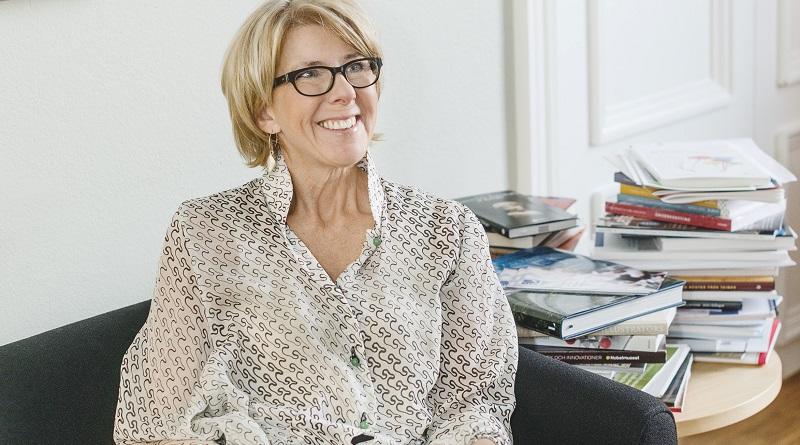Annika Rembe, Director-General of the Swedish Institute, has served many roles promoting Sweden abroad, including as Commissioner General for Sweden’s participation at World Expo 2010 in Shanghai. In this interview she shares her thoughts on country reputation, public diplomacy and the challenges Sweden faces of maintaining a favorable country reputation abroad.
Learn about:
- The Swedish Institute and how it promotes Sweden abroad, through public diplomacy;
- How having satellite offices outside of Sweden helps facilitate the Swedish Institute’s mission;
- The main challenges Sweden faces in promoting the country abroad;
- Advice for graduate students seeking a career in country brand development or management.
Annika, do you remember the first time you became aware of the reputation of places such as cities or countries? What got you interested?
I think it was during my first backpacking trip traveling by train through Europe in my late teens. I reflected on where we wanted to go and why. As well as the perception of Sweden from the people we met on our way.
You are the Director-General of the Swedish Institute. Can you give us a short overview of your role and how the Institute promotes Sweden and Swedish issues globally?
The Swedish Institute has since 1945 been working to strengthen the interest for Sweden, to establish long-lasting relations and build mutual trust between Sweden and the world.
We are, in different ways, sharing Swedish experiences and competencies with the perspective that the global challenges we all are facing need to be met by collaboration and co-creation, and that Sweden would like to – and can – be a partner in that. What we need today is not less but more collaboration.
You served as Commissioner General for Sweden’s participation at the World Expo 2010 in Shanghai. Have you seen the perception of Sweden change in the Asian market since then?
In general, the perception of Sweden is positive and not only in Asia. However in most parts of Asia Sweden is not well known among larger groups. Knowledge about Sweden decreases with age, and we have a big challenge in reaching the young generations.
This challenge is something we share with many European countries. At the same time, we see that Sweden is attracting growing groups of Asian students, as well as tourists and investments.
The Swedish Institute currently has offices in Stockholm, Visby, and Paris. How does an office in Paris play into the long term strategy of the institute’s mission and vision? Are there plans for other offices abroad?
Our Paris office has been promoting culture, the Swedish language and creating networks for 50 years. We also use our Paris office as a node in a European context and as a place to develop new concepts and formats which can travel to other parts of the world.
In other places, we have a close and good collaboration with Swedish and international partners, not the least with Swedish embassies and consulates.
How does the Swedish Institute measure the success and ROI of its initiatives aimed at nation or country branding?
Measuring the effects of the activities and communication is a challenge. The Swedish Institute has been working to address this for many years, but we haven’t found a method we are 100% pleased with yet.
Looking at the Nation Brands Index is not a viable way because changes in the general image of a country are too slow. Also, the effects of what we do and everything else that might affect perception is inseparable.
However, we always record perceptions of our target groups as well as measure participation, reach, and engagement in our activities.
From your experience, which are the main challenges in developing and maintaining a favorable country reputation abroad?
A country cannot simply create a new image. You have to do your research and find out what the current image is. Next, you can try to strengthen the positive aspects of that image, targeting specific priority groups.
Being credible, relevant and authentic is key, whether it comes to developing or maintaining a country’s image abroad.
As a current mentor of Women Up Sweden, would you share your thoughts on the women entrepreneurs and the role they can have in building a place’s reputation?
We know that equality, including women’s entrepreneurship, is beneficial for economic growth in a country. And we know that economic development and growth is of relevance when building a reputation.
I would say that a country that promotes women’s participation in economic life is likely to be seen as more diverse and open, and therefore more attractive.
Three bits of advice to graduate students seeking a career in country brand development or management?
It is important to be curious and follow what’s going on in the world. Ask yourself, what are the drivers for people and organizations? Adding to the curiosity:
- Make sure to include intercultural understanding.
- Make sure you understand the basics of strategic communication, including digitalization.
- Write your university thesis on nation branding, and if possible, write it in cooperation with a relevant organization.
How do you tell the difference between country and nation branding, and public diplomacy? Does your work overlap with that of public diplomacy officers?
SI works with long-term objectives, increasing awareness and interest in Sweden. We use public diplomacy as one important tool to achieve this. I believe our work does overlap, but also complements what other actors do. But whether public diplomacy or nation branding, the end goal is to build trust and future collaboration and co-creation.
Thank you, Annika.
Connect with Annika Rembe on LinkedIn or learn more about the work of the Swedish Institute.
Enjoyed our interview with Annika Rembe on country branding, public diplomacy and how the Swedish Institute promotes the country abroad? Spread the word!


